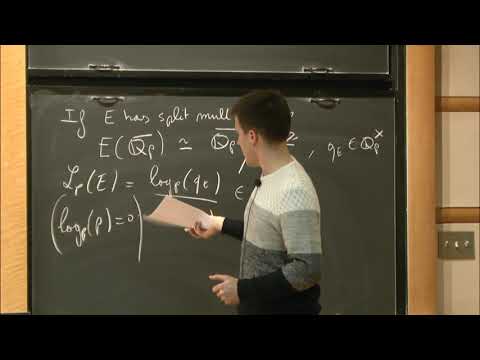An Application of a Conjecture of Mazur-Tate to Supersingular Elliptic Curves
Presenter
February 14, 2019
Abstract
In 1987, Barry Mazur and John Tate formulated refined conjectures of the "Birch and Swinnerton-Dyer type", and one of these conjectures was essentially proved in the prime conductor case by
Ehud de Shalit in 1995. One of the main objects in de Shalit's work is the so-called refined $\mathscr{L}$invariant, which happens to be a Hecke operator. We apply some results of the theory of Mazur's
Eisenstein ideal to study in which power of the Eisenstein ideal $\mathscr{L}$ belongs. One corollary of our
study is the following elementary identity on supersingular $j$-invariants.
Let $N$ be a prime number and $p\geq 5$ be a prime dividing $N -1$. For simplicity, assume
$N\equiv 1$ (modulo 12). Fix a surjective group homomorphism $\operatorname{log} : \mathbf{F}^{\times}_{
N_2} \to \mathbf{Z}/p\mathbf{Z}$. Let $S =\{E_0,\ldots, E_g\}$ be the set of isomorphism classes of supersingular elliptic curves over $\overline{\mathbf{F}}_N$. We
denote by $j(E_i)\in \overline{\mathbf{F}}_N$ the $j$-invariant of $E_i$; it is well-known that $j(E_i)\in \mathbf{F}_{N^2}.$ Let $\mathcal{T}(S)$ be the
set of spanning trees of the complete graph with vertices in $S$. If $T \in \mathcal{T}(S)$, let $E(T)$ be the set
of edges of $T$. If $0 \leq i \neq j\leq g$, let $\lbrack E_i,E_j \rbrack$ be the edge between $E_i$ and $E_j$. We have:
\[
\sum_{T \in \mathcal{T}(S)}\prod_{\lbrack E_i,E_j \rbrack \in E(T)} \ \log(j(E_i)-j(E_j))=0
\]
